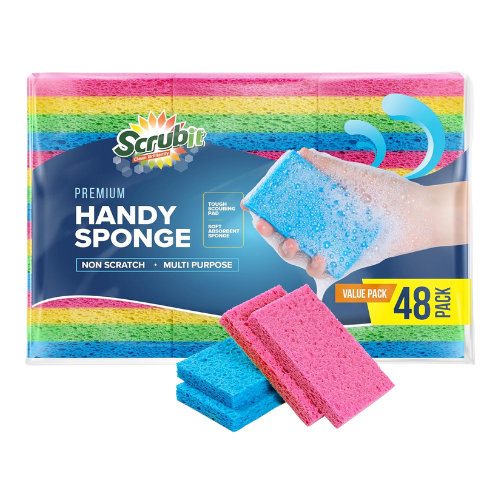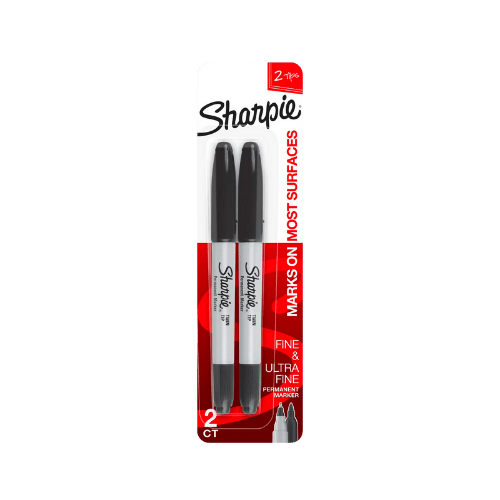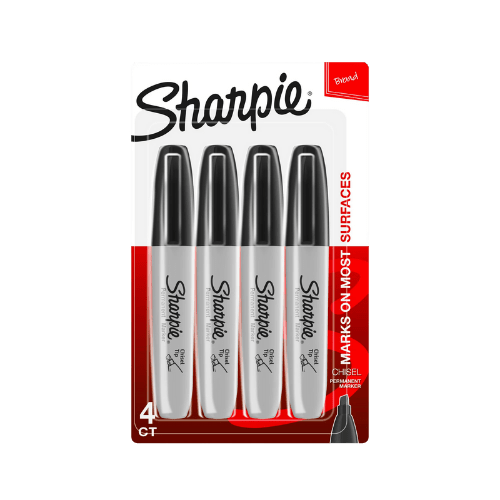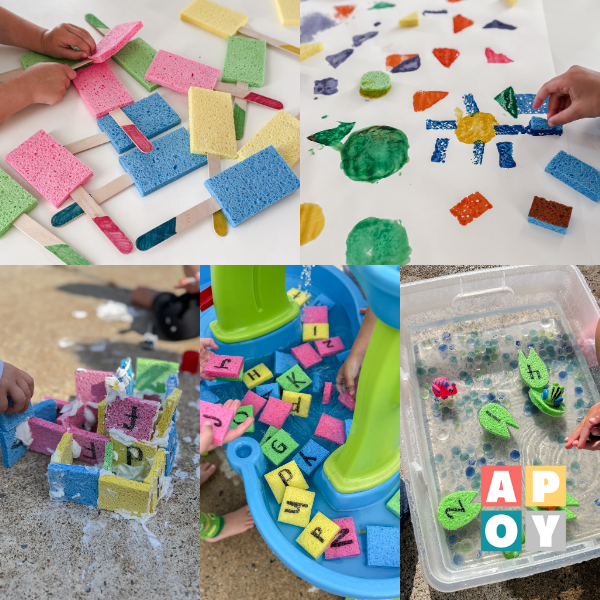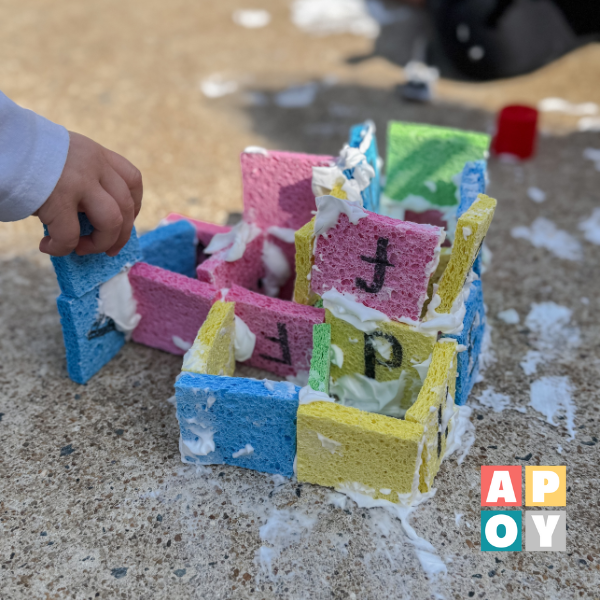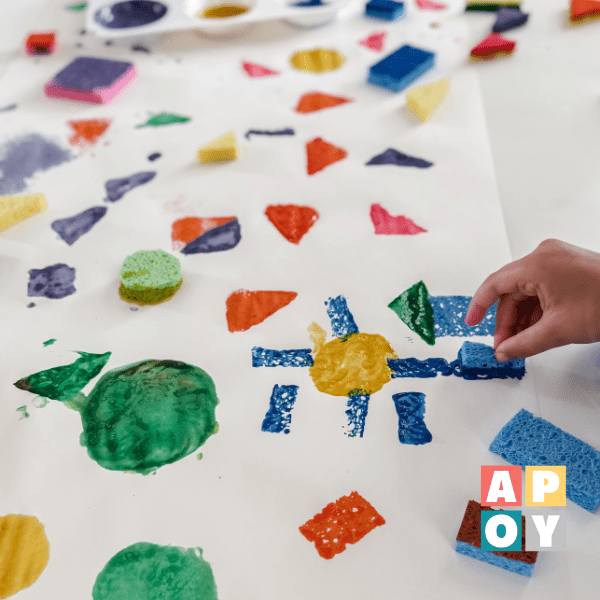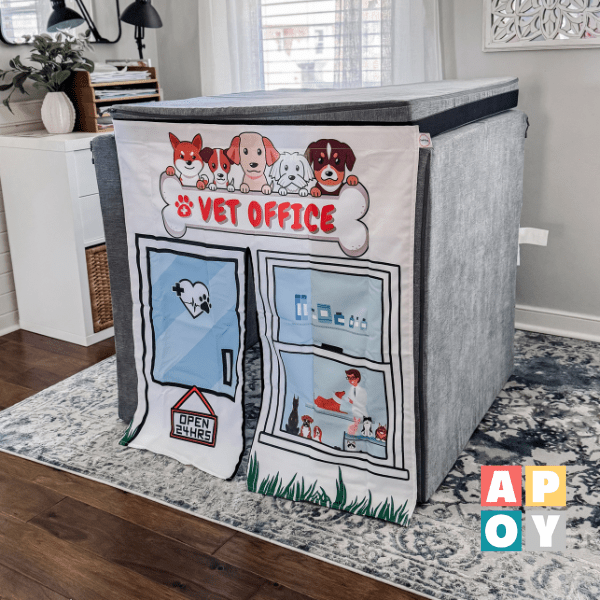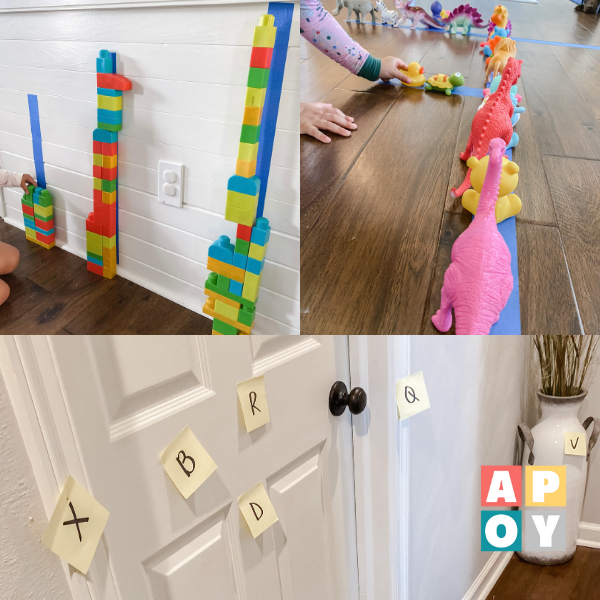Hop Into Learning: Sponge Number Sense Lily Pad Water Activity
This sponge number sense lily pad water activity is the perfect hands-on way to sneak in counting, number recognition, and fine motor skills using just a few household items.
This blog post may contain affiliate links. When you make a purchase through these links, I may earn a small commission, at no additional cost to you. I only recommend products that I genuinely believe can benefit you and your family! Your support helps maintain and improve all things A Pop of You. Thanks so much!
A Lily Pad, A Frog, and a Bit of Math Magic
If there’s one thing toddlers love, it’s water. Splashing in it, pouring it, dunking stuff into it. Add sponges, plastic frogs, and a bit of sneaky math, and suddenly you’ve got a sensory-rich learning experience they’ll beg to do again. This sponge number sense lily pad water activity checks all the boxes: simple setup, minimal mess (for a water activity, anyway), and best of all—you’re using items you likely already have at home.
If you’ve been following along with our activities with random household objects series, you already know that I love turning overlooked items into intentional learning tools. This time, we’re taking on the humble sponge. Yes, the one lurking under your sink. Turns out, it makes a pretty adorable lily pad—and a pretty powerful number sense booster too.
Let’s jump in.
What Is the Sponge Number Sense Lily Pad Water Activity?
This sponge activity is a hands-on, water-based number recognition and counting game that uses green sponges cut into lily pads. Each lily pad is labeled with a number (1–5), and your child’s job is to count out the correct number of stones to match the number on the pad. Bonus: there are plastic frogs involved. (Frogs make everything better.)
It’s the kind of simple at home learning that looks like play, feels like play—but packs a sneaky little educational punch.
Why Parents Love This Activity
Aside from the fact that it requires approximately zero crafting skills, this activity brings a lot of value to the table. It builds number sense in a natural, playful way and strengthens fine motor skills as little hands pick up and place small stones. The combination of water play and varied textures makes it a rich sensory learning experience, and it sneaks in simple math without a single flashcard or worksheet. Plus, it’s flexible enough to work indoors or outdoors—whether that’s in a tub, a plastic bin, or straight-up backyard grass. If you’ve got a toddler who thrives on movement and hands-on exploration, this kind of counting activity is the golden ticket.
What You’ll Need
Here’s your quick, no-frills materials list. Don’t overthink it—use what you’ve got:
- 5 green rectangular sponges (or cut larger ones down to size)
- Permanent marker
- Plastic bin or large dish tub
- Plastic frogs (dollar store party favor aisle, I see you)
- Small counting stones (pom-poms, glass gems, buttons, or even dry pasta if that’s what’s in your pantry)
- Water
How to Set It Up
I promise, you don’t need to be crafty or have an education degree for this. Just a pair of scissors and a willingness to let your kid splash.
- Cut your sponges into lily pad shapes.. Don’t overthink the shape—rounded edges, a little notch to mimic a real lily pad. Your kid won’t notice if it’s botanical perfection.
- Write the numbers 1 through 5 on the lily pads. Big and bold with a permanent marker.
- Fill your bin or tub with water. Room temperature is fine. Add enough water for the lily pads to float.
- Add in the plastic frogs and counting stones. Make it feel like a miniature frog pond. The more immersive, the more fun.
- Float the sponge lily pads on the surface. Give them a gentle press so they soak a bit and settle in.
- Invite your child to choose a lily pad. Ask them to identify the number and then count out the matching number of stones to place on top of the sponge.
- Repeat with each lily pad. Celebrate each match, even if the counting’s a little off. It’s about exposure, not perfection.
- Optional extension: Add frog math! Have them place the correct number of frogs on each lily pad instead, or act out simple stories like “Two frogs hop onto pad number 2…”
Learning Outcomes: What’s Actually Happening Here?
Sure, this looks like water play—and it is. But underneath the giggles and splashes, your child is working hard on:
- Number Recognition: Seeing numerals repeatedly in a playful context reinforces how numbers look, which builds the foundation for future math fluency.
- Counting One-to-One: When your child matches each stone to a counted number, they’re practicing the concept that one object = one count—a huge milestone in early math.
- Fine Motor Skills: Picking up slippery stones, balancing them on a sponge that’s slightly bobbing? That’s a coordination workout in disguise.
- Sensory Learning: The water, squishy sponges, smooth stones—this is full-body learning. Engaging multiple senses helps lock in information and boosts focus.
- Confidence in Simple Math Activities: This is math without pressure. It’s playful, it’s engaging, and it’s achievable—which builds confidence and motivation to try again next time.
Ways to Mix It Up
The beauty of this kids learning activity is how easy it is to adapt. Got older kids or younger siblings? Here are a few ways to tweak it:
- For older toddlers or preschoolers: Add more lily pads with numbers up to 10. Or add a simple addition element: “Can you find two lily pads that make 5 when we add them together?”
- For younger toddlers: Focus just on floating and identifying the sponge shapes. Let them freely explore the water and textures.
- For outdoors: Set up in a kiddie pool or large container outside. Add leaves or flowers for even more nature-themed sensory play.
- No frogs? No problem. Sub in small toy animals, Duplo figures, or let their imagination do the work.
- Add color matching: Use colored stones or counters and ask them to match both color and number. Multitasking fun!
Tips for Keeping It Calm (Even When There’s Water Everywhere)
Let’s be honest: water play can get rowdy. Here’s how to keep it calm and contained:
- Place a large towel or waterproof mat under your setup.
- Offer a hand towel nearby for wet hands.
- Remind them gently that splashing is for outside water play.
- Set a 10-minute timer if transitions are tricky, so they know when clean-up is coming.
Remember, the best kids activities don’t have to be long to be meaningful.
MORE ACTIVITIES USING SPONGES
Colorful sponges are basically the Swiss Army knife of toddler learning tools. Cheap, versatile, and easy to store. I keep a stash in a drawer just for moments like these. So, if you liked this one, check out the other activities in the series:
- Sponge Popsicle Color Match: Cut sponges into popsicle shapes and paint or color each one in vibrant shades. Create matching “popsicle stick” cards or use colored cups. Your child matches the sponge popsicles to the correct color. A refreshing way to practice color sorting—no freezer required!
- Sponge Water Table Letter Match: Cut sponges into squares and write letters on each one with a permanent marker. Drop them into a water table or bin and invite your child to fish out specific letters, match them to a chart, or spell simple words. Great for reinforcing letter recognition in a fun, sensory-rich way!
- Sponge Shape Stamping: Cut sponges into basic shapes like squares, circles, triangles, and rectangles. Dip them in paint and stamp away on paper to create shape-filled masterpieces. It’s a hands-on way to explore shape recognition, color recognition, and sensory play—all while turning a simple item into a creative tool.
- Sponge Shaving Cream Buildings: Use halved sponges and foam shaving cream as “glue” to build towers, houses, or whatever their little hearts imagine. Take it outside for a sensory-filled fine motor activity that feels like play and sneaks in learning. Perfect for outdoor learning and exploring balance, cause and effect, and tactile play.
Want More Activities Using Sponges?
This is just one part of my activities with random household objects series. Colorful sponges are surprisingly versatile for toddler learning. Here are a few other sponge activities you might love:
- Sponge Letter Stamps: Cut sponges into letters and stamp them in washable paint. Great for ABC exposure.
- Sponge Color Sort: Cut sponges into squares and have kids sort them into bowls by color. Add tongs for extra fine motor skills practice.
- Sponge Building Challenge: Can you stack sponge pieces into a tower before it topples? A quiet challenge for little engineers.
Final Thoughts
The next time you’re staring at your child, wondering what in the world to do with the rest of the morning—remember your secret weapon under the sink. The sponge number sense lily pad water activity is simple, satisfying, and sneakily educational. It’s a win for your child’s development, a win for your sanity, and a win for making calm, connection-filled memories at home.
Now go grab those sponges. The frogs are waiting!


Hey, I’m Katelyn, the “Achievably Extra” Mom! Join me for creative family fun and practical tips! Let’s inspire each other!





